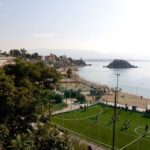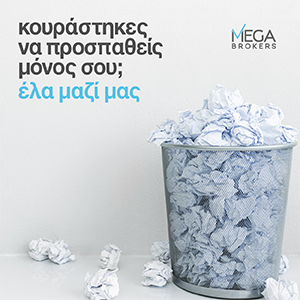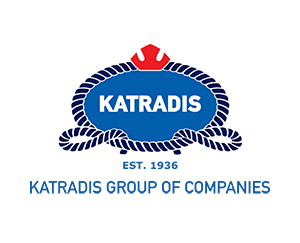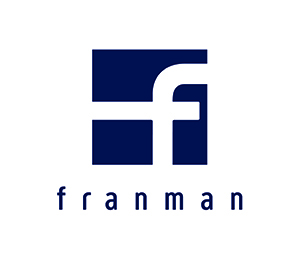Following Euroseas Ltd.’ (NASDAQ: ESEA) Q2 2023 results, Capital Link put together a comprehensive overview of ESEA’s performance, corporate strategy, and insights into the container sector’s outlook. The recap draws directly from the company’s publicly released information, including announcements, press releases, presentations, and conference calls.
Highlights
Strong charter cover and solid fleet performance enabled Euroseas to weather market volatility and produce strong Q2 2023 results.
The majority of ESEA’s vessels were chartered at high rates prior to the market decline.
ESEA’s charter cover of 93% for 2023 and 64% for 2024 translates into cash flow stability and predictability regardless of short-term market developments.
Strong liquidity and balance sheet – total debt of $132.8 million; cash of $38.2 million.
Capital allocation balanced between fleet renewal and shareholder returns with quarterly dividend and share buy back program.
9-vessel newbuildig program ensures long tern fleet competitiveness.
Favorable fundamentals for small and medium-size container shipping segment compared to larger vessels.
Common shares trade at about 50% discount to NAV based on management estimates.
“We are very pleased with our results for the second quarter of 2023 which are one of the best results we have ever had since Euroseas became a containership focused public company in 2018. At the same time, our very high charter coverage at quite profitable rates for the remainder of the year but also for 2024 suggests that we should continue registering highly profitable quarters regardless of charter rates development” stated Euroseas Chairman & CEO, Mr. Aristides Pittas.
No alt text provided for this image
Source: Company Filings & Presentation – Cash includes Restricted Cash of $6.4 million
Solid Charter Coverage Ensures Profitability
Net Revenues for Q2 2023 were $47.7 million, with Adjusted Net Income of $28.9 million, or $4.17 per share (diluted), and Adjusted EBIDTA at $30.6 million. Overall fleet utilization was at 99.8% with daily TCE per vessel of $30,151.
Euroseas has covered 93% of its fleet for 2023 and 64% for 2024 at profitable rates, which provides a cushion for the company and ensures profitability. Most of Euroseas’ vessels are employed under fixed rate time charter contracts booked before the decline of market rates started.
“One-year time charter rates were up in the first half of the second quarter but up to now they have declined again by about 15% compared to their highs in mid-May. They are about 75% lower than their levels a year ago, but they are still higher than their pre-pandemic levels” added Mr. Pittas highlighting the benefits of Euroseas’ chartering strategy which aims to maximize revenues over the market cycle.
Regarding the container market outlook, he added “However, the direction charter rates will take during the rest of 2023 and 2024 remains quite uncertain based on the projected supply and demand trends. We believe we are well insulated from market volatility and expect to generate significant cash flow reserves, that will allow us to comfortably fund the equity portion of our remaining seven newbuilding vessels, continue our dividend and share repurchase program and still have a significant war chest to pursue investment opportunities in an accretive way to our shareholders.”
Mr. Tasos Aslidis, CFO, highlighted during the conference call that the daily Breakeven per vessel for the first half of 2023 was $13,996, and this includes vessel operating expenses, G&A, interest, drydocking and loan repayments without the balloons. Daily TCE for the first half of 2023 was $29,714. As depicted in the company’s Q2 2023 earnings presentation, the Cash Flow Breakeven for the next 12 months is estimated at $14,682.
Strong Balance Sheet and Continued Shareholder Rewards
Highlighting the strength of the balance sheet, Mr. Tasos Aslidis, CFO, mentioned that at the end of Q2 2023, total debt stood at around 34% of the book value of total assets. Total debt was $132.8 million. Cash, including restricted cash, was $38.2 million. Euroseas has also advanced $93.8 million for the newbuild vessels under construction.
Mr. Pittas stressed during the earnings call that “We remain committed to continue paying significant dividends to our shareholders.” In this context, the company announced a quarterly dividend of $0.50 per share, making this ESEA’s sixth consecutive quarterly dividend. Annualized, this translates into a yield of around 8% based on current share price levels.
The company has also opted to continue its share buyback program of $20 million extending it for an additional year. As of August 9, 2023, the company had repurchased 396,615 of its common shares, or about 6% of the total shares outstanding, for a total of $8.1 million.
Common Shares Trade at about 50% Discount to NAV
As depicted in the company’s Q2 earnings presentation, based on charter adjusted market value of vessels and the net change of newbuilding contracts, the company estimates its Net Asset Value per share at $53.2, which Mr. Aslidis contrasted to the recent share price – which closed at $24.56 on 8/11/2023 – representing a significant discount to what management estimates the value of the company.
Green Fleet Renewal Ensuring Long Term Competitiveness
Euroseas has embarked on an aggressive plan to improve the average age and the energy efficiency profile of its fleet, by launching a 9-vessel newbuilding program at Korean Yards and an extensive upgrade of the existing fleet.
Mr. Pittas stated in a previous podcast that the company took advantage of the “fantastic container market” during 2021 and first half of 2022, fixing all vessels in the fleet for long periods at very high rates. Rather than using the large cashflow to invest in secondhand vessels, the company opted to acquire modern newbuilds aiming to expand the fleet and reduce greenhouse gas emissions with the state-of-the-art environmental technology on the ships.
According to Clarkson’s data, the orderbook in the 1,000 to 3000 TEU range which is Euroseas’s main focus, stands at 11%, compared to 28.3% for the whole fleet, with half of the fleet older than 15 years. ESEA decided to invest in newbuildings in this segment, which is its main focus, as a means of ensuring long term competitiveness for the company.
Since the ultimate winning green fuel has not been determined yet, the company decided to invest in high specification eco-vessels that run on conventional fuel but can be converted, at an additional investment, to also burn LNG.
All ESEA newbuildings will adhere to the latest energy efficiency design standards (EEDI phase 3), ensuring significant reductions in fuel oil consumption and emissions for these vessels. Their carbon footprint per unit of cargo shipped is estimated to be about 45% less in the useful speed range compared to similar ships built 15 years ago.
The ships are also fitted with a Tier III engine plant, which lowers NOx emissions by about 70%, as compared to the normal Tier II engine plants. In addition, they are fitted with AMPs (Alternative Marine Power), which allow the use of shore high-voltage electricity in designated ports, thus further reducing the ships’ carbon footprint and nullifying any harmful emissions while the ships are operating alongside ports.
Moreover, the potential conversion to use LNG, could allow for an additional reduction of their carbon footprint by about 20% and the reduction of other harmful emissions, such as SOx and PMs to minimal quantities.
Out of the 9-vessels, Euroseas has taken delivery of two 2,800 TEU eco-newbuildings this quarter, the MV Gregos in April and the MV Tetataki in July. Both commenced 36–40-month charters at a rate of $48,000 per day with Asyad Lines upon their delivery and are expected to contribute in excess of $84 million of EBITDA over their duration. The financing for the newbuilds was managed through the company’s own funds in conjunction with sustainability-linked loans from National Bank of Greece for MV Terataki and Eurobank S.A. for MV Gregos.
ESEA expects a total of seven more newbuildings, three 1,800 TEU ships, and four 2,800 TEU vessels, to be delivered in 2024. On a fully delivered basis of its vessels under construction, the company’s fleet will be comprised of 26 containerships with a cargo capacity of about 75,461 TEU and an average age of just under 13 years. Currently, its fleet has a cargo capacity of 58,861 TEU with an average age of 15.9 years.
Container Market Outlook
From the demand perspective, macroeconomic concerns, especially those surrounding inflation rates, have caused a dip in the container sector. While China’s post-covid rebound was weaker than anticipated, growth in other emerging and developing countries is projected to defy the overall global economic slowdown. India has emerged as a center for economic growth, which has resulted in increased demand for the sector. Forecasts indicate that demand will remain soft for the rest of the year but may begin to rebound in 2024, with the biggest challenge resting on the supply demand balance given the deliveries of new tonnage.
“The direction charter rates will take during the rest of 2023 and 2024 remains quite uncertain based on the projected supply and demand trends. There is good news on the economic front as it appears that the attack on inflation via interest rates increases has worked without causing a recession, at least, in the developed economies; undoubtedly, stronger economic growth is positive for containerized trade and containership demand. But there remain geopolitical uncertainties and, quite importantly, a large orderbook of containership vessels to be delivered over the next 2-3 years that the market needs to absorb. The latter seems a difficult task despite the expectation that fleet growth is to be somewhat mitigated by greenhouse gas emission regulations that will force some vessels to either reduce their speeds or stop trading”, stated Mr. Pittas.
The dynamics for the segment Eurosease focuses on seem more favorable, given that the lower orderbook (11% of the fleet), the lower delivery schedule (9.4% in 2023, 5.6%, in 2024, and 1.2% in 2025) and the aging profile (50% of fleet over 15 years old). “Thus, we could expect a decline in the size of the fleet in this segment in the next few years” stated Mr. Pittas, and continued “One thing though, that is becoming obvious is that the spread between charter rates achieved by eco vessels over conventional ones is expected further increase. Also, the smaller size vessels from 1000 to 6000 TEU are expected to recover faster from any downturn due to the healthier supply situation.” Scrapping of overage ships and slow steaming could have an additional positive impact.
While shying away from making long term market predictions, Mr. Pittas reiterated in the Q2 conference call, “We believe that we are well protected against market volatility with a high contracted revenue coverage throughout 2023 and 2024 at very healthy rates. Our liquidity buildup will allow us to comfortably take delivery of the remaining seven new building program while keeping leverage low at around 60%. It will also allow us to continue paying a significant dividend and executing on our stock repurchase program, as price continues to hover at levels below 50% of NAV. At the same time, we will continue to evaluate investment opportunities with low risk that will incrementally increase our revenues and growth potential.”
About Euroseas Ltd.
Euroseas Ltd. was formed on May 5, 2005 under the laws of the Republic of the Marshall Islands to consolidate the ship owning interests of the Pittas family of Athens, Greece, which has been in the shipping business over the past 140 years. Euroseas trades on the NASDAQ Capital Market under the ticker ESEA.
Euroseas operates in the container shipping market. Euroseas’ operations are managed by Eurobulk Ltd., an ISO 9001:2008 and ISO 14001:2004 certified affiliated ship management company, which is responsible for the day-to-day commercial and technical management and operations of the vessels. Euroseas employs its vessels on spot and period charters and through pool arrangements.
The Company has a fleet of 19 vessels, including 12 Feeder containerships and 7 Intermediate containerships. Euroseas 19 containerships have a cargo capacity of 58,861 TEU. After the delivery of seven feeder containership newbuildings in 2024, Euroseas’ fleet will consist of 26 vessels with a total carrying capacity of 75,461 TEU. For more information please visit the company’s website at www.euroseas.gr
Sourcing Capital link insights























